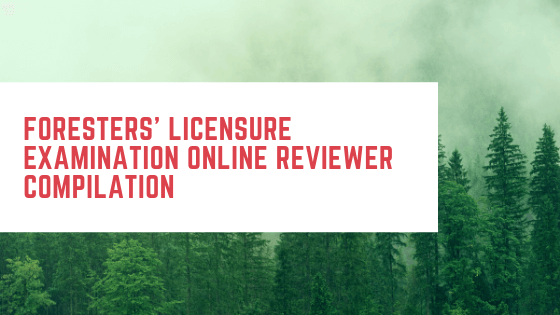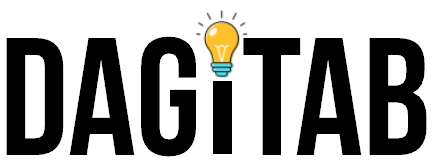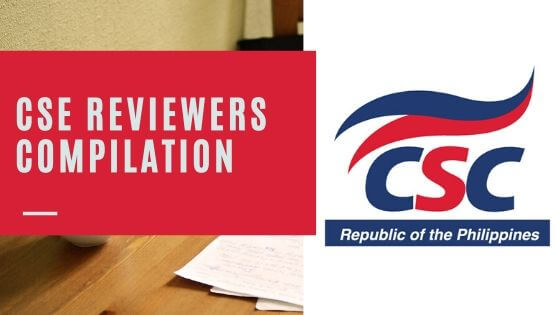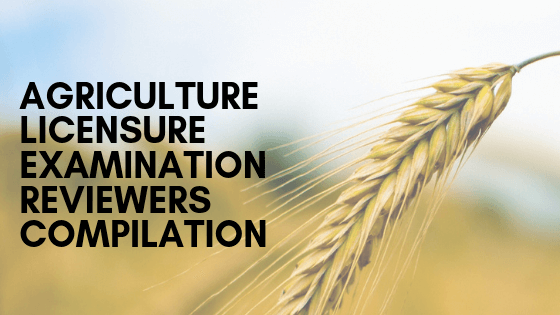
Are you looking for Foresters Licensure Exam online reviewers? You’re in the right place. Here at Dagitab, we have published a compilation of questions and answer reviewers. These were formatted in interactive quizzes for better reviewing experience.
Foresters’ Licensure Exam Practice Tests
Forest Ecosystem Reviewer [Practice Test 1]
Forest Ecosystem Reviewer [Practice Test 2]
Forest Governance and Social Forestry Reviewer [Practice Test 1]
Forest Governance and Social Forestry Reviewer [Practice Test 2]
Forest Governance and Social Forestry Reviewer [Practice Test 3]
Forest Governance and Social Forestry Reviewer [Practice Test 4]
Forest Production Management Reviewer [Practice Test 1]
Forest Production Management Reviewer [Practice Test 2]
Forest Production and Management Reviewer [Practice Test 3]
Forest Utilization and Engineering Reviewer [Practice Test 1]
Forest Utilization and Engineering Reviewer [Practice Test 2]
Forest Utilization and Engineering Reviewer [Practice Test 3]
Forester’s Licensure Examination Date 2019
The exam will be held on Septem 4 and in all Regional Offices, in Manila, and in Zamboanga.
Here is the coverage of the Foresters’ Licensure Examination as per Resolution No. 01, Series of 1998 also known as the “Adoption of Syllabi for the Subjects in the Foresters’
Licensure Examination.”
FOREST ECOSYSTEM (20%)
A. Forest Botany
- Cellular Structure
- Vegetative and Reproductive Characteristics of Plants
- Morphology and Anatomy of Plants
B. Dendrology
- Classification of Forest Plants
- Plant Geography
- Gross Morphology
- Key to Identification
- Nomenclature
C. Forest Ecology
- Basic Ecological Principles
- Forest and Other Ecosystems
- Hydrologic Cycle
3.1 Evapotranspiration
3.2 Precipitation
3.3 etc.
4. Ground Water
5. Discharge of rivers/streams
6. Forest influences (climate, soil, man, etc.)
D. Forest Soils
- Soil Formation (parent material, climate, topography, living organism, time)
- Soil Profile/Horizons
- Soil Classification (categories, soil orders)
- Soil Properties, (biological, physical, chemical)
- Soil Moisture Content
- Soil and Water Conservation
E. Three Physiology
- Tree Growth and Processes (photosynthesis, respiration, translocation)
- Primary and Secondary growth
- Shoot and Crown Development (shoot growth, crown shape/development, patterns of
growth) - Flowering, Fruiting and seed production
- Tree Nutrition
F. Forest Entomology
- Classification of Insects
- Beneficial and Harmful Insects
- Insect Infestation
- Preventive and Control Measure
4.1 Biological
4.2 Physical
4.3 Mechanical
4.4 Chemical
G. Forest Pathology
- Diseases in Plants (signs, symptoms, classification)
- Parasitism (infection, resistance susceptibility, pathogenicity, etc.)
- Pathogenesis/disease development (influence of environment on parasites, host etc.)
- Pathogens (bacteria, virus, fungi, etc.)
- Principles and Methods of Control
H. Forest Biodiversity
- Wildlife (Flora and Fauna)
- Classes of Wildlife
- Wildlife Food and Feeding Habits
- Economically important species
- Rare/endangered species
- Wildlife Laws, Rules and Regulations
I. Forest Genetics and Tree Improvement
- Genetic Concepts and Principles
- Basic Concepts of Tree Improvement
- Methods of Tree Improvement
- Practical Applications and Returns
II. FOREST UTILIZATION ENGINEERING (20%)
A. Wood Structure and Identification
1. Basic Principles and concepts of the identification of commercial and lesser-used
Philippine woods.
2. Anatomical properties of wood
B. Wood Physics and Mechanics
1. Physical properties of wood
2. Theories and practice of wood physics
3. Strength of wood materials on various sectoral exposures
4. Strength of wood materials on various types of stresses
C. Wood Seasoning and Preservation
1. Wood Chemistry
1.1 Basic principles and concept of wood chemistry
1.2 Wood chemistry and its effects to the machining properties, structural strengths
and resistance to various degrees of stresses and temperature
1.3 Economics of chemical wood extracts
2. Wood Seasoning
2.1 Theories and practice of wood seasoning
2.2 Various methods of seasoning
2.3 Control of moisture content
2.4 Effect of moisture on dimensional changes
2.5 Economic aspect of wood seasoning
3. Wood Preservation
3.1 Principles and concept of wood preservation
3.2 Factors affecting destruction and decay of wood
3.3 Methods of preservation and control
3.4 Fire proofing
3.5 Penetrability of various species to chemical preservation
3.6 Economic aspect of wood treatment
D. Forest Products Utilization
1. General Lumbering and Wood Processing
1.1 Basic Principles and concepts of lumbering
1.2 Purpose and elements of lumbering
1.3 Forest products processing
1.3.1 Sawmilling Techniques
1.3.2 Processing of forest products residues
1.4 Recovery and Productivity of Forest Products
2. Veneer and Plywood
3. Pulp and Paper
4. Wood Composite
5. Species suitability for various products
6. Economic aspects of Forest Products Utilization
E. Utilization of Non-Timber Forest Products
1. Principles in processing utilization of non-timber forest products
1.1 Rattan
1.2 Bamboo
1.3 Fibers substitutes
1.4 Others (Vines, etc.)
2. Economics and Valuation Aspects of Non-timber Forest Products
III. FOREST GOVERNANCE AND SOCIAL FORESTRY (25%)
A. Forest History, Policy and Administration
1. History of Forestry in the Philippines
2. Constitutional Provisions
3. Revised Forestry Code
4. Forestry Legislation
5. Presidential Proclamations
5.1 Decrees
5.2 LOIs
5.3 DAOs
5.4 Executive Orders
B. Social Forestry and Extension
1. Goals, Basic Elements and Principles
2. Definition of Terms
3. Importance of Forest Management and Protection
4. Community Forestry Programs
5. Extension, Principles and Strategies
6. Agroforestry
C. Forest Protection
1. Forest Rehabilitation/Restoration of Forestlands
2. Conservation/Preservation of Wilderness Area
3. Law Enforcement
4. Problems/Strategies
5. Forest Degradation and Causes
D. Environment and Sustainable Development
1. Concept of Sustainable Development
2. Environmental Problems
3. Environmental Problem Analysis
4. Designing of Environmental Solutions and Actions
E. Professional Ethics and Values
IV. FOREST PRODUCTION AND MANAGEMENT (35%)
A. Forest Biometry, Mensuration and Inventory
1. Basic statistical concepts
2. Sampling Techniques
3. Methods and Applications of Timber Inventory Methods
4. Definition of Terms
5. Volume Estimates
6. Site Quality Estimation
7. Growing Stocks
8. Stand Density
9. Remote Sensing, GIS, aerial photo-interpretation
B. Forest Management
1. History and Foundation
2. Principles and Concepts
3. Development, Goals and Objectives
4. Definition of Terms
5. Allowable cut determination
6. Cut Allocation and Scheduling
7. Forest Operation Planning
8. Integrated Forest Management Plan
9. Regulation of Forest Stands
10. Forest Management Planning
11. Problem Solving
C. Forest Economics and Finance
1. Principles and Concepts
2. Simple and Compound Interest
3. Present Value of Cash Flow
4. Criteria for Financial Investment Analysis
4.1 NPV
4.2 IRR
4.3 B/C/Ratio
4.4 Payback period
5. Market Structure
5.1 Production, Cost and Supply
5.2 Shadow market prices
5.3 Stumpage Valuation
5.4 Demand and Supply Analysis
5.5 Forest/Land rent
5.6 Forest Rotation
5.7 Problem solving
D. Range Management
1. Definition of Terms
2. Factors Affecting the Grassland Ecosystem
3. Nutrient Cycling in Grassland
4. Ecology in Grassland
5. Types of Grassland
6. Management and Protection of Grassland
7. Succession in Rangelands
8. Problem Solving
8.1 Determination of Animal Unit
8.2 Grazing Capacity
8.3 Grazeable areas
E. Multiple Use Forestry
1. Principles and Concepts
2. Definition of Terms
3. Ecosystems Approaches
4. Sustainable Yield
5. Primary and Secondary Uses
6. Application and Problems
7. Watershed Management
8. Harmonization of Objectives
F. Silvicultural Methods/Systems
1. Objectives
2. Regeneration methods
2.1 Purpose
2.2 Types and Applications
2.3 Advantages and Disadvantages
3. Intermediate Treatments Management and Protection
3.1 Objectives
3.2 Methods and types
3.3 Effects on Stand Growth and Yield
4. Forest Harvesting
4.1 Felling and Bucking
4.2 Tools and Devices
4.3 Minor Log Transport
4.4 Major Log Transport
5. Silvicultural Practices
5.1 Philippine Selective Logging
5.2 Clear cutting
5.3 Seed tree and its variation
5.4 Shelterwood
5.5 Coppice
G. Forest Nursery
1. Propagating Structures
2. Propagating Media
3. Propagating Techniques
4. Nursery Management
H. Forest Plantation
1. Site preparation and Establishment
2. Seedling Preparation
3. Intermediate Treatments (clearing, weeding, etc.)
4. Plantation Management
We wish you all the best on taking the examination.


